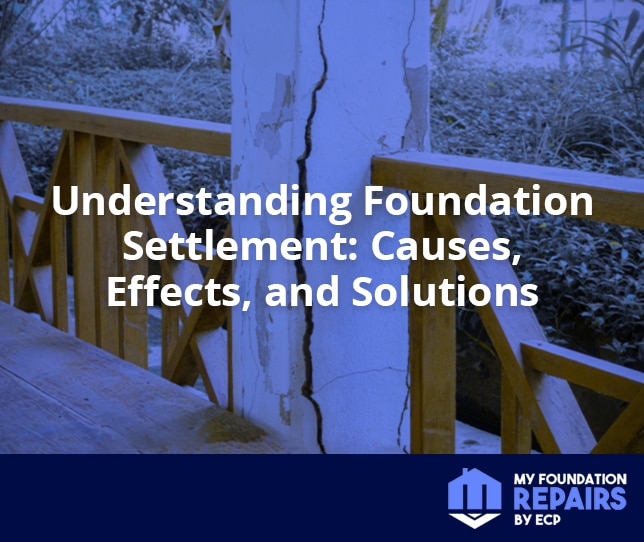Understanding Foundation Settlement: Causes, Effects, and Solutions
Foundation settlement can be a serious and potentially costly problem for homeowners. Knowing the causes, effects, and solutions to this issue is essential in maintaining your home's value and structural integrity over time.
In this post, we'll help you understand foundation settling so that you can take proactive steps to protect yourself from any potential issues down the line. From recognizing warning signs of trouble to understanding effective preventative measures – we have all the information you need right here!

What is Foundation Settlement?
Foundation settlement is a type of soil failure wherein the soil surrounding the foundation of a structure causes it to sink, tilt, or move. This can happen due to several factors, such as water damage caused by excessive rains or large amounts of snowmelt, poor soil compaction when constructing, and soil erosion.
As this process occurs, it weakens the strength of the foundation and structure, compromising its durability and creating visible cracks in interior and exterior walls. This instability can lead to further structural problems and complete collapse if left unchecked. It’s important for homeowners to be mindful of signs like uneven floors and walls that may be indicators of foundation settlement before the situation worsens; once identified, professional services should be sought out immediately to ensure safety and upkeep stability.
Causes of Foundation Settlement
Foundation settlement can occur due to a number of different reasons, the most common being poorly compacted soil, changes in surrounding water levels, and extreme weather.
Poor compaction is usually caused by too little compaction taking place during initial construction or the use of unsuitable fill materials. Various weather patterns can cause problems as well, with soil drying out more rapidly than average and changes in water levels leading to shifts in soil consistency that can result in cracks forming in foundations as well as settlement. Lastly, improperly large loads being placed atop a foundation can lead to sinking or cracking issues.
All of these causes must be accounted for in order to prevent foundation settlement from occurring.
Types of Foundation Settlement
Foundation settlement can happen naturally over time or in response to changing environmental conditions. Keeping up with regular inspections and reinforcing foundations can help prevent foundation failure, but there are several different types of settlement that can occur.
Heave
Heave usually happens as moisture or frozen ground expands, applying pressure from below the surface.
Subsidence
Subsidence is when the soil beneath the foundation shifts or collapses, causing the foundation to sink or settle unevenly.
Compression
Compression is caused by poor construction or when too much weight constricts above ground soils.
Understanding these different types of settlement can help homeowners make necessary repairs before total structural damage takes place.
How to Tell if Your House is Settling
Detecting a foundation settlement problem in your home can be difficult, but if it goes unchecked it can cause serious structural issues. To watch out for this type of issue, you should monitor the cracks in your walls and windowsills, inspect your basement regularly to see if there is any wetness or water pressure coming through the walls, identify areas that have sunken or changed shape due to settling, and check door jambs to make sure they are still level.
If you identify any of these problems, it’s important not to ignore them and, instead, contact a professional for help to assess the situation further. With early detection and correction, major foundation repairs can be avoided altogether.
Solutions for Preventing or Repairing Foundation Settlement Issues
Foundation settlement issues can cause a host of problems for homeowners, ranging from water leaks and mold growth to major structural damage. Fortunately, there are several options available for preventing or repairing foundation settlement issues.
Crawl space encapsulation is an effective approach that involves sealing the walls and floor with a waterproof membrane in order to protect the structure from moisture. Furthermore, adding piers or piles beneath interior foundation walls can support the weakened walls and help return them to their original position. Another solution is called leveling and stabilization, which entails raising parts of the home to correct any misalignments caused by settled foundations.
No matter which method is used, it is important to consult with a qualified professional before attempting any foundation repairs.
